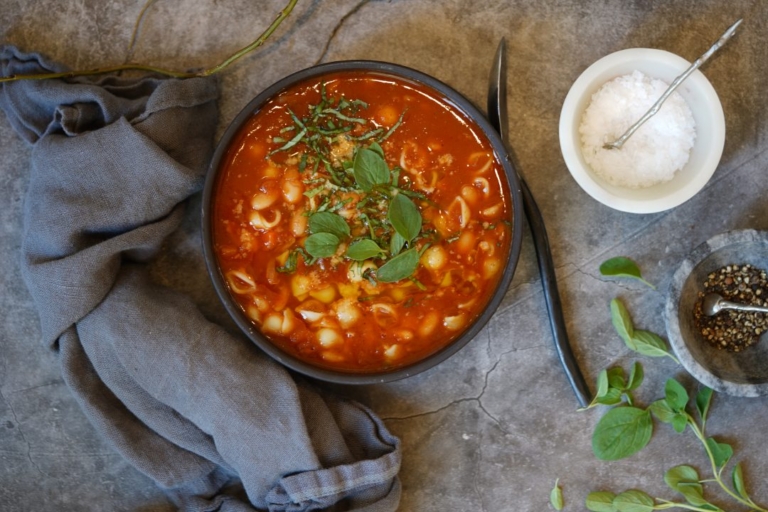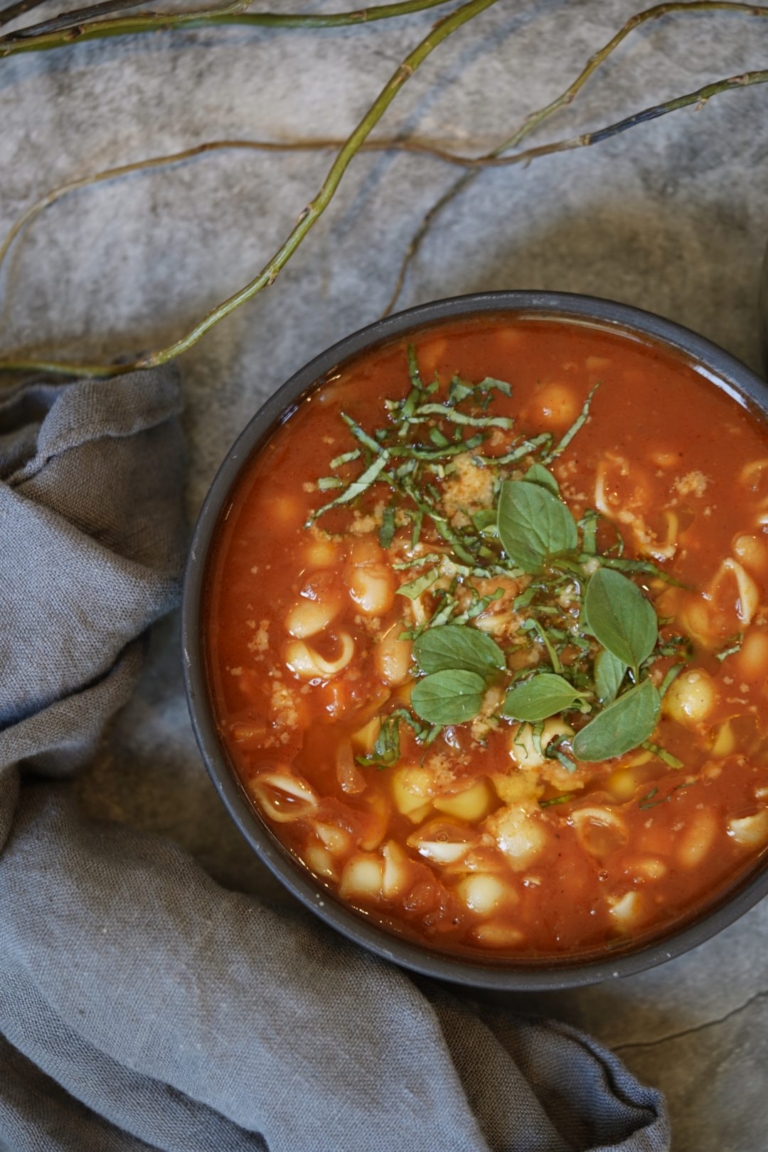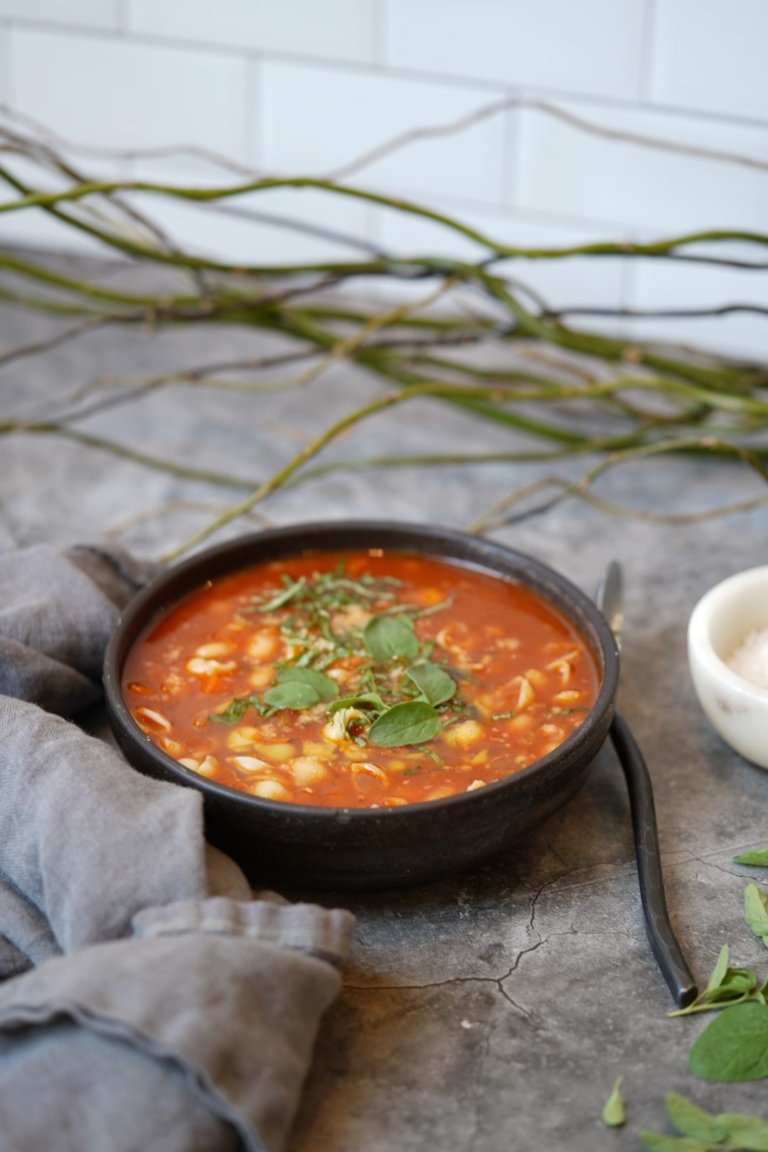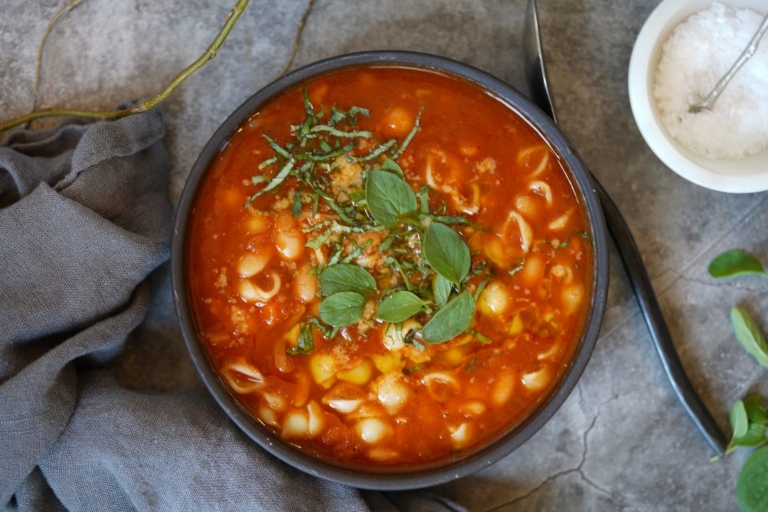Pasta E Fagioli Soup

Pasta e fagioli is one of the most famous dishes in the entire Italian repertoire. This well-known rustic soup is a nourishing dish that falls somewhere between soup and pasta. Pasta e fagioli is a traditional meal with a rich history and is incredibly worthy of making at home if you’ve not done so before.
Pasta e fagioli, also called “pasta fagioli” or “pasta fazool” in Italian American slang, simply means “pasta and beans”, referring to the two main ingredients in this hearty Italian favorite. This traditional dish started as a peasant dish because it uses inexpensive ingredients that are considered filling. This was a dish families ate together, but was not one they served to guests.
Depending on where you are in Italy, the aromatics in pasta e fagioli may change, or the shape of the pasta may differ, but most versions have one thing in common, a simple broth, enriched with onion, carrot, and celery. From there, the dish is made slightly differently in certain regions.
But one thing that rarely changes in pasta e fagioli, is the beans. Although the names refers to simply pasta and beans, “fagioli” refers to a specific style of bean—typically cannellini beans. In Italy, occasionally you may see this famous soup with cranberry beans, but rarely with anything else.
Soffritto verses Mirepoix
Making this soup requires making a soffrito. Based on the Italian verb “soffriggere”, which means “to stir fry” or “sauté,” soffritto is more of a cooking technique rather than a traditional dish. Soffritto is best described as an aromatic flavor base composed of sautéed carrots, celery, and onion that is sautéed in olive oil or butter until the ingredients’ rich flavors form the foundation of many soups, including pasta e fagioli.
Mirepoix, which is considered the French counterpart of soffrito, is diced vegetables that are sautéed in butter, under low heat for an extended length of time. The purpose of a mirepoix is to slowly draw out the sweetness from the vegetables rather than sautéing them. But the goal, unlike a soffrito, is not to turn the vegetables golden or caramelized.
Pasta e Fagioli Verses Minestrone
Pasta e fagioli and minestrone are two Italian soups that are rather similar. But the main difference is in the vegetables. While minestrone features a wide variety of vegetables, pasta e fagioli’s focus is on pasta and beans. The latter is often thicker and more stew-like than minestrone.
Pasta e fagioli is a more recent discovery after seeing it on menus for years. While I would not be inclined to order this dish in anything but an authentic Italian restaurant, I was eager to try it at home. This is my soup of winter and one I’ll be making often during ski season.
Pasta E Fagioli Soup
Ingredients:
- 2 cups dried great Northern beans or white beans, soaked overnight
- 1 1/2 cups small pasta (such as baby shells or ditalini)
- 2 cups soaking liquid reserved
- 3 tablespoons Extra-Virgin olive oil, plus more for drizzling
- 1 yellow onion, small dice
- 2 carrots, peeled and small dice
- 6 garlic cloves, minced
- 1 teaspoon salt
- 1/2 teaspoons black pepper
- 1 teaspoon paprika
- 2 Bay leafs
- One (15-ounce) can of crushed tomatoes
- 1/2 cup tomato paste
- 4 cups good quality vegetable or chicken stock
- 1/4 cup Parmesan cheese, for serving
- 2 tablespoons fresh basil, roughly chopped, for garnish
- 3 tablespoons fresh oregano, for garnish
- Freshly ground black pepper to taste
Directions:
- Drain and rinse the beans and set aside. Cook the pasta, al dente and drain, reserving 2 cups of cooking liquid for later.
- In a Dutch oven, add the olive oil and place over medium heat. When hot, but not smoking, add the onions, carrots and cook, stirring often, until the vegetables are tender, about 3-4 minutes. And the garlic and cook until fragrant, about 30 seconds. Add the beans, salt, pepper, paprika, Bay leafs, tomatoes, tomato paste, reserved pasta liquid and stock and bring to a boil. Reduce the heat to medium-low and bring to a gentle simmer.
- Cook until the beans are very tender, about 2–3 hours, depending on size and age of your beans. When the soup is ready, remove the bay leafs. Adjust the seasoning to taste as needed.
- To Serve: divide soup among bowls. Top with Parmesan, basil and oregano. Serve hot.





